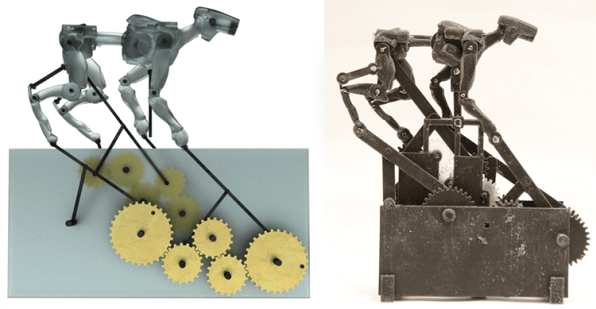Disney Princess Names That Start With D
It might be hard to appreciate in the 21st century, but before interactive apps, before CGI, and before cinema, a lot of what we'd call "animated entertainment" consisted of little hand-cranked robots. These toys, called automata, were mechanical wonders whose appeal rested on novelty: If you turn the crank, what will this lifeless hunk of wood do? The purposely exposed mechanisms–full of oddly shaped gears, threads, ratchets, and spindles–only served to heighten the intrigue. Now, some geeks at Disney Research have decided to reboot this old-school style of physical animation for the age of 3-D printing and computer-assisted design. Here's a preview of their prototype app:
The software team, led by Stelian Coros and Bernhard Thomaszewski in Disney Research's Zurich lab, sought to create a way to make the design and fabrication of automata as easy as dorking around with iMovie–or maybe Final Cut Pro. The interface for their prototype still looks more like a professional CAD suite than an iPad app, but cut them some slack. It's not like you'd be able to whittle a crank-driven animated cheetah out of balsa wood without some help.
The most interesting thing about the software is its focus on making the design process as effortlessly iterative as possible. Instead of banging your head against the wall trying to pre-visualize what combination of spindles and gears could possibly output the kind of animated motion you have in mind–say, for the leg of a running cheetah–the software lets you start with the picture you have in your head (the cheetah leg) and then roughly sketch a path of motion to see what happens. From there, the app draws on a deep library of mechanical patterns and finds the best match to your sketch. In other words, it fills in the hard mechanical-engineering stuff for you, so you can focus on the fun of animating.

The important part, though, is that the creative process doesn't stop there. It's not just a matter of sorting through a limited list of canned solutions to approximate the design you want. The software collaborates with you: You make an initial guess, it guesses back, you tweak it, it optimizes, you get a different idea and try something else, it follows, and so on. This call-and-response interactivity makes it easy to imagine getting seduced by the same "hard mechanical engineering stuff" that you might have started using the app to avoid. Hm, so that's how to make a figure-eight shape… what happens if I change the size of that gear…?
"The process of creating mechanical toys, or automata, is an art form with a rich history, but it also requires a great deal of engineering knowledge, skill, and experience with mechanical systems," Coros and Thomaszewski tells Co.Design. "We believe that our system has the potential of exposing this interesting art form to a much broader range of users that can start designing and manufacturing their own creative mechanical toys." That's right–thanks to 3-D printing, the automata you dream up with Disney's software could be spat out on your home Makerbot someday. With that kind of creative horsepower at your fingertips, who needs the next crappy sequel to Cars?
["Computational Design of Mechanical Characters" at Disney Research]
Disney Princess Names That Start With D
Source: https://www.fastcompany.com/3016640/disneys-software-could-let-you-3-d-print-your-own-mechanical-toys
0 Response to "Disney Princess Names That Start With D"
Post a Comment